3 Boxer Dog Colors (With Pictures)

Updated on
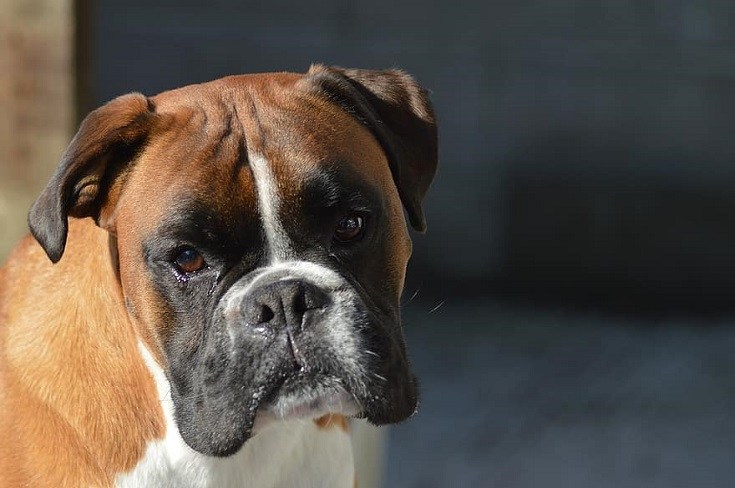
There’s a good reason why the Boxer ranks 11th on the American Kennel Club’s (AKC) list of most popular breeds. They make it so darn easy to fall in love with! Boxers are affectionate, a little goofy, and always ready to play. Unlike some dogs that come in a wide variety of colors, this pooch has only four AKC, and the United Kennel Club (UKC) accepted hues.
You’re probably familiar with the most common ones, Brindle and Fawn. You’ll also see some variations on these themes with black and white, mainly as markings on the other two. However, there is another color that is a bit of a controversy that we’ll also explore. The story involves the AKC, UKC, and some genetics that went wrong.
Colors of the Boxer
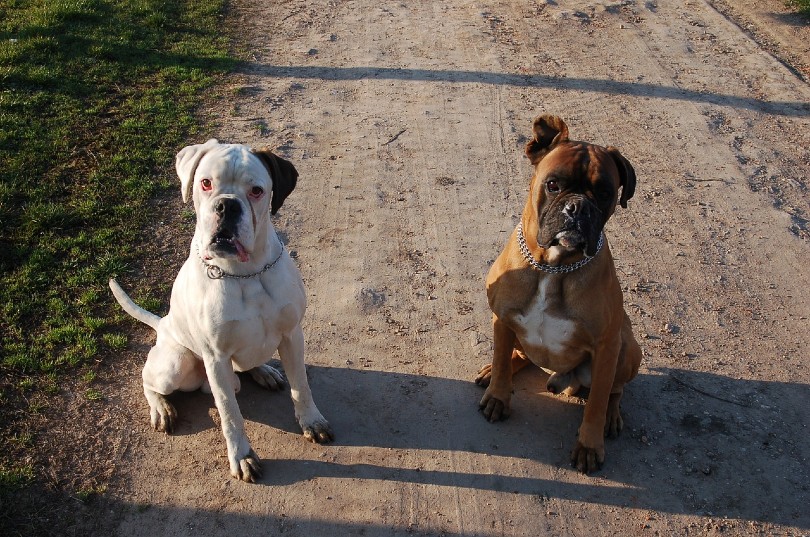
The gold standard for the colors and markings of the Boxer comes from the AKC and UKC. They pretty much agree on all the major points. Remember that these organizations set the bar for competition for confirmation to the essence of the breed. Each one has a group of criteria by which they are judged. It includes things like general appearance, body shape, coat, and color.
The coat itself is short and lies flat on the Boxer’s body. Think of it as kind of a buzz cut for dogs. That doesn’t mean that the Boxer doesn’t shed. Going over your pup with a hound glove or curry brush regularly will help keep it in check. His fur should be shiny and feel smooth. The Boxer is fussy about their appearance and will keep themselves clean.
We’ve talked about the typical colors that define the breed. Just because you see Boxers in different hues doesn’t mean that they are official standards for the dog. That’s where the White Boxer comes into the fray. We’ll save that one for last.
The 3 Boxer Colors
Boxers come in three colors, although these can be mixed and matched into different combinations.
Those 3 colors are:
1. Brindle Boxer
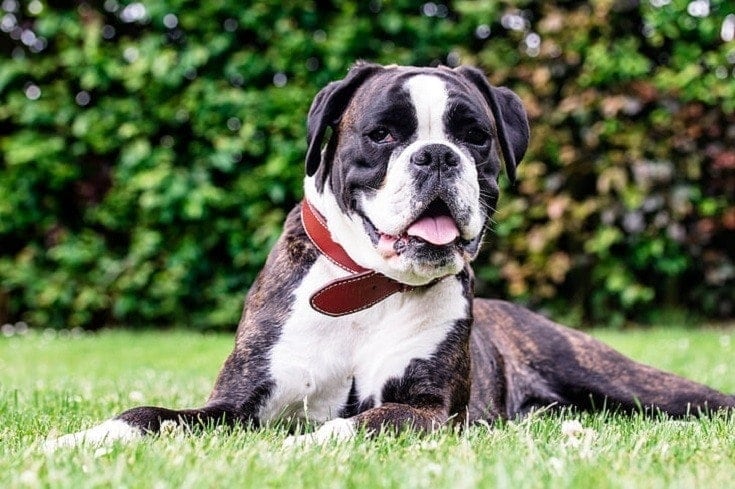
The Brindle’s technical definition is a tawny or gray base coat with darker spots or streaks that give it a mottled look. Other breeds that have this color pattern include Great Danes, Pit Bulls, and Greyhounds. The density of the black can vary from barely noticeable to almost dark brown. Genetics handles the pattern and thickness of the striping.
Markings of the Brindle Boxer
The beauty of the Boxer’s coat becomes evident when juxtaposed with white markings. The darker colors pop against the light. However, there’s only so much of a good thing as far as the AKC standard for the breed is concerned. They set a limit of up to one-third of it. They are not desirable on the back or flanks. Some white on the face is okay, too, as long as it isn’t excessive. The Boxer, after all, has a long to maintain.
That said, some dogs don’t have any white markings at all. They may have the black muzzle with the color extending up toward their eyes.
2. Fawn Boxer
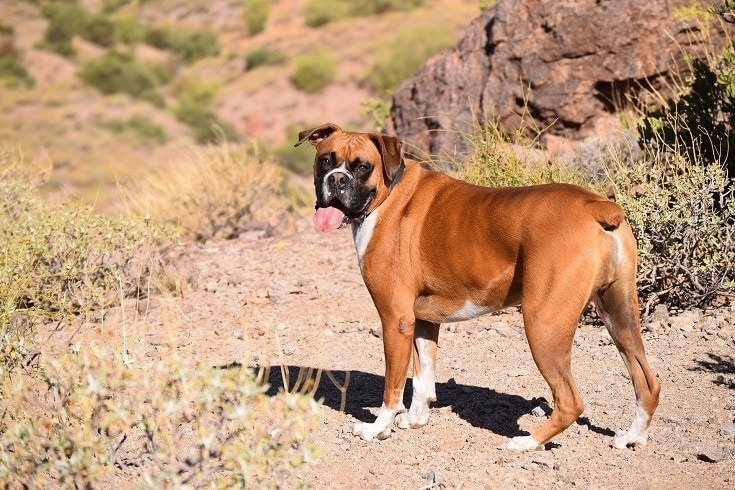
Fawn is the classic Boxer color. The shade can range anywhere from buff to chestnut brown. The rest of the official standard reads similarly to the part describing Brindle Boxers. A dog that is all Fawn is acceptable in the show ring. Most likely, you’ll see this pup with some white and black too.
Markings of the Fawn Boxer
Likewise, there are the same restrictions on the proportion of white on the Fawn Boxer. The goal is to keep that definitive look that the breed has. UKC also stipulates that it’s imperative that the dog has a black muzzle. We have to agree. It wouldn’t look like a Boxer without those markings.
3. White Boxer
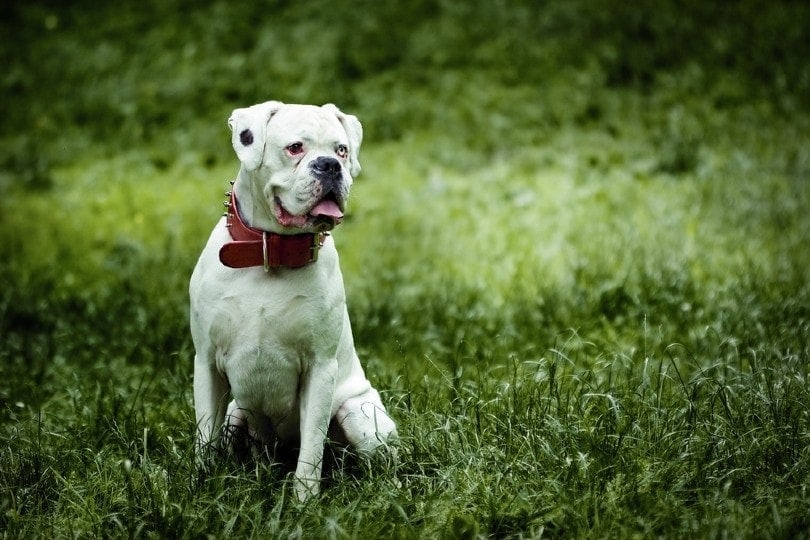
The wildcard with the Boxer’s color is a matter of genetics, of which three account for most variations that we see in dogs, including this one. This hue has been with the breed for hundreds of years. For a while, it was accepted as part of the standard. The personality of the pup is also a part of these criteria.
In Germany, Boxers followed their earlier history as a guard dog. Indeed, they are part of the Guardian Dog Group of the UKC. However, in 1925, the German sector of the Boxer club banned this color variation, citing that it didn’t fit its standard and purpose. The decision was merely a cosmetic one. It wasn’t until later that the controversy heated up in the show ring and among breeders.
Markings of the White Boxer
Let’s begin by defining what we mean by White. Some people equate it with albino, which technically is not valid. A White Boxer usually has brown eyes and a black nose. If it were an albino, it would lack the pigmentation for those colors. Instead, his nose and pads would be pink. As an aside, albinoism is a disqualification in the show ring.
White Boxers often have other black markings on them. Because there isn’t an official standard, you can find them anywhere on the dog’s body. However, is the white color a problem?
Health Issues with the Boxer Dog Colors

First, let’s delve into some background. Many breeds have a predisposition to one or more congenital health issues. Reputable breeders will pre-screen parent dogs and their litters for the ones most common in that line. The Canine Health Information Center (CHIC) works with the various breed clubs to maintain databases on the tested animals. They also provide recommendations for testing.
Dogs that test positive for specific conditions are not bred to reduce the incidence in the population. It’s a wise and humane thing to do, considering how devastating some disorders are. Unfortunately, the white color of the Boxer carries some of these problems. To be clear, some of them are not exclusive to this breed. It’s part of the genetics that is the real culprit.
The issues with the White Boxer and others of this ilk result from the lack of pigment. It can affect the haw or inner corner of the pup’s eyes. Besides detracting from his appearance, it can make the dog more likely to go blind. It can also cause deafness. The pooch may also get sunburned more quickly, which can increase his risk of cancer.
All of these things seem like compelling reasons not to breed White Boxers. There is a happy ending to the story. The American Boxer Club thought differently about the tarnishing of the innocent pup’s reputation. In 2016, they persuaded AKC to enact an American Kennel Club Limited Registration for white puppies for performance events only. However, they still discourage breeding them.
We agree with the club’s decision to recognize the White Boxer this way. While the risk for genetic issues exists, any color of dog can make a delightful pet. It’s all about socialization and proper training. Owning a Boxer—or any pup—is a serious responsibility. The lovable disposition of the breed makes it an easy thing to do.
Final Thoughts
The Boxer is a handsome dog, no matter if they are fawn, brindle, or white. They are happy and friendly pooches that will make excellent pets and faithful companions for you and your children. They are always a bit of a character, which makes owning one a fun experience with new adventures every day.
Though today’s pup isn’t the guard dog of the past, the Boxer is every bit as loyal and trustworthy.
Featured Image Credit: Pikist













